I’m a huge fan of the Montessori Method. I have a history with it that goes back to my own days of attending a Montessori preschool. My husband went to the same one as I – he was in the morning class, I was in the afternoon. One of my sisters, my brother, and two of my nieces went. My Wild Daughters partner, Chrissy, went up until high school! Currently, another one of my nieces and my son are both enrolled.
There are many guiding principles for the Montessori Method, but the ones I want to focus on are The Prepared Environment and Practical Life Skills, since these are two areas that are easily transferrable to the home setting without needing specific Montessori designed materials.
Here are some things to consider when setting your home up for Montessori methods.
The Prepared Environment
Despite the fact that my son is in his second year of Montessori, I felt that our home set up was lacking. We practice the Method, in terms of giving our kids responsibilities and trust in order to learn independence. For example, all their dish ware is at their level so they can get their own drinks and plates as they need them. Our son has a pitcher of water that he can access to pour his own drink, he is free to go into the fridge and get apples as he pleases, and he also has a step stool so he can wash the apples himself.
It’s ideas like these that make up the Prepared Environment of Montessori, which is based on the idea that a child’s surroundings can be designed to enhance their natural learning, as well as give them the ability to explore freely. Recently, I was shopping with a friend to pick up items for transitioning to a more fully realized Prepared Space and she said it was like I was shopping for a “little adult” – which is exactly what it’s like.
Imagine the adult world, just shrunk down to kid size. That is what a Montessori space looks like. Everything is at their eye level which, if you think about it, makes complete sense. Why would we make a child navigate a space that is inaccessible to them, especially if we have control of that environment? Here are some of the ways we are working to create a Prepared Environment in our home:
Creating an Orderly Space
A big aspect of the Prepared Environment is the idea of an “orderly space” – and this is where we were hitting a wall. Our space is the furthest from orderly. We clean up, for sure. But it can get ugly quick! Usually toys are just thrown into a drawer or bin, which usually ends up overturned with everything lying about underfoot constantly (why do I always manage to step on the most painful toy when getting up in the middle of the night?!).
These are some items that we’ve recently introduced:
Trays
These help keep tasks contained to a specific area. At my son’s school, each individual set of learning materials is on its own tray the kids can then choose and take to their workspace. I picked up a few basic wooden trays with handles from the local craft store for bigger projects and these square Melamine plates from Target for smaller projects.
Containers/baskets
You can never have too many containers and baskets. One thing I’ve learned is with my kids is whenever I bring a new item into our home, the first place I put it is the place that the kids associate as “its place.” So it’s good to be prepared! I crocheted these toy cocoon bags awhile back that have been great for organizing toys.
But you really need a multitude of sizes and materials for different projects and tasks. I got these small wooden crates from the craft store and there’s always little plastic trays with multiple sections that are great for activities like sorting.
Small rugs
Another practice I’ve adopted from my son’s school is the use of small area rugs. They have to be small enough for the kids to roll up themselves and carry. Whenever the kids want to work on the floor (as opposed to a table) they get a rug, roll it out, and bring their activity to the rug. When they are done, they put their activity away, roll up their rug, and put it away.
Not only does it keep their activity contained and focused, but it also teaches them to be aware of the space they share with others. It also helps them to get into the habit of cleaning up after themselves and being responsible for their actions. We just started doing this at home, and so far it’s been really successful.
Thinking Kid-Sized
I mentioned earlier the importance of having the space be accessible to a child. Some ways of altering your space to allow your kids to fully explore their environment:
Artwork
Hang artwork at their eye level. We let the kids hang up their artwork wherever they please. Keep some washi tape or clothespins on hand for them to access whenever they want.
Furniture
Luckily, these days it’s very easy to find kid furniture that is sized for their diminutive frames. Having more than one work station is also nice if you have the room to spare. Kids feel empowered when they have the freedom to choose how and where they work/play.
Low shelving and accessible drawers are another important feature since it allows the kids to get what they need without having to ask for help. In our home we have a worktable with benches, shelving with books that are accessible, and a set of drawers in our living room that contain toys and books the kids can reach.
Step Stools
When I went to Montessori as a child, our space had a sink that was at kid height so we could wash our hands or plates on our own. However most people don’t have the luxury of having a sink at kid height in their home! Make sure you have step stools so kids can access things like the sink or toilet on their own. This also helps to keep some items out of reach of the smaller ones who haven’t quite yet grasped the concept of things like sand (yikes) but still accessible to older kids. We have a two-year old who is still very early in the stages of her Montessori journey. She’ll be starting school in the spring!
Displaying Beautiful Things
Just because they are kids, doesn’t mean they don’t appreciate beauty in objects and their surroundings. It doesn’t need to be fancy or expensive; it can be something as simple as having a vase of flowers in their work space. Montessori also teaches a deep love and appreciation of nature.
This can be translated into going outdoors and exploring, but also bringing nature indoors through the use of natural materials such as wood, glass, cotton, and wool when possible.
Practical Life Area Activities
One of the things we noticed with our son is that, like many other 4-year-olds, he has a tendency to act up when he’s not engaged. So, I’ve been looking into small activities that are simple to do at home. In Montessori, Practical Life Area activities are just basic life skills like tying shoes, buttoning buttons, pouring liquids, folding, sweeping, wiping, etc. Not only are these basic skills, they help strengthen certain muscles that are important for other important activities such as handwriting.
One thing to remember is that it’s not about the materials. Materials are just tools of the Method and the Method is about letting your child’s interests guide the lessons and helping them to think about things in different ways; there are a multitude of concepts to learn in something as basic wiping a table:
“It looks like a simple exercise, but, as you will see, it is not just about playing in water. It teaches responsibility for the environment, develops fine- and gross-motor skills, and creates an orderly sequence of steps, enhancing the child’s ability to focus and remain on task.” – Joyce St. Giermaine
The lessons are simple, but the method itself is very rich.
It takes cues from everyday life and how we interact with the world around us to guide how a child naturally learns – through interest and support. Some activities that we are currently exploring at home based on what our son has shown interest in:
Clothespins
I mentioned this earlier! Just a bin of clothespins that a child can play with or use for a particular activity like hanging pieces of cloth on a line, or hanging artwork, helps them develop hand-eye coordination as well as strength.
Folding
A basket of old cloth diapers, or wash cloths is a great way to keep kids occupied while teaching them a skill. It builds muscular control and is a subtle lesson in symmetry. We also use cloth napkins that the kids fold and place into a basket for use during meals.
Sprayer Bottle
Our two-year-old loves this activity. We filled a spray bottle with water and vinegar and the kids spray the floors and walls and wipe them clean. We have a container of small cloths (that used to be cloth wipes we used in place of baby wipes) that the kids use to wipe. We also have another spray bottle of water that they use to spray plants.
Tweezers/Tongs
Using tweezer or ice cube tongs, the child moves objects from one container to another. We have little colored pompoms, but you can use anything from dried beans, to beads, or even cotton balls.
Do any of you use the Montessori method with your kids at home? What ways have you found to implement the method into your daily lives?
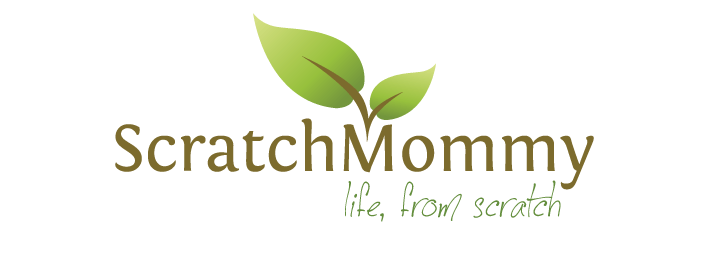
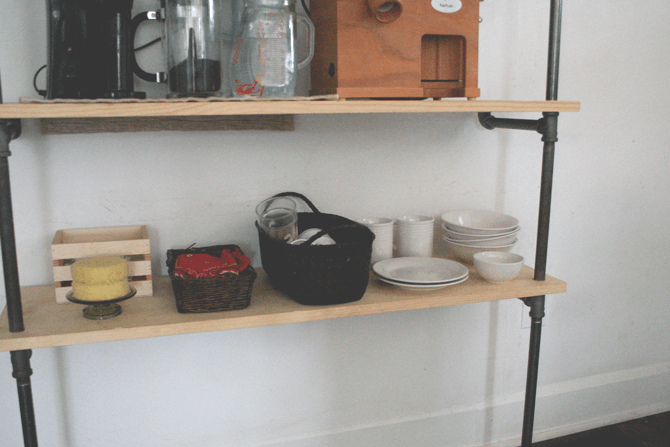
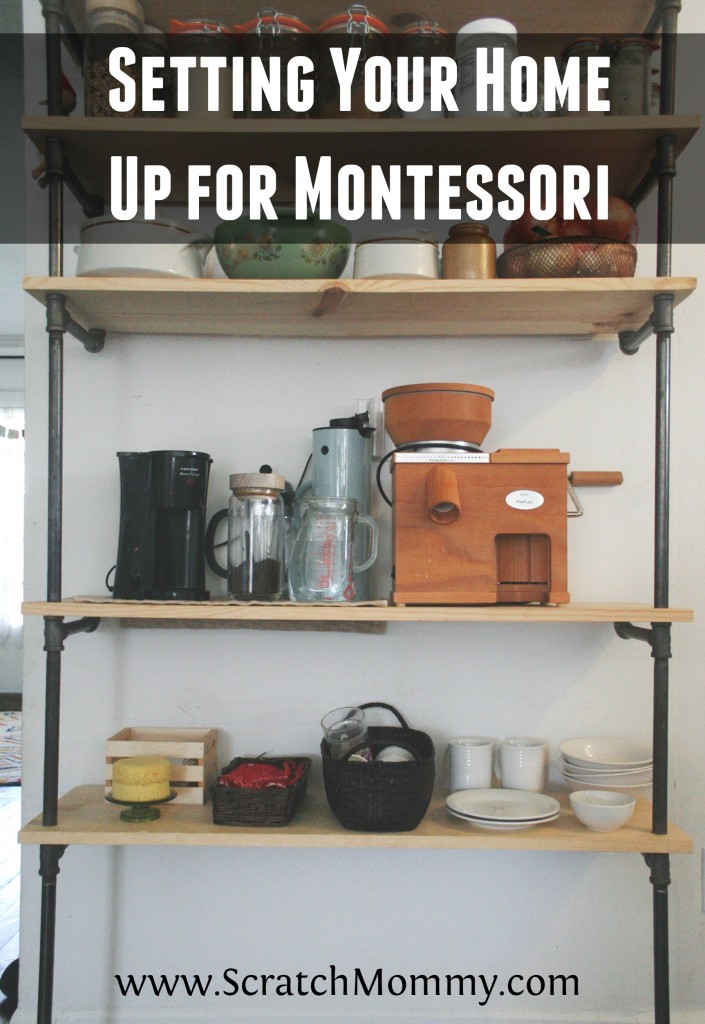
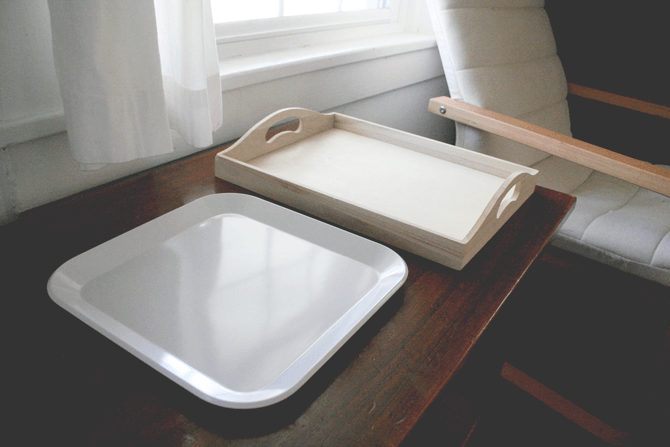
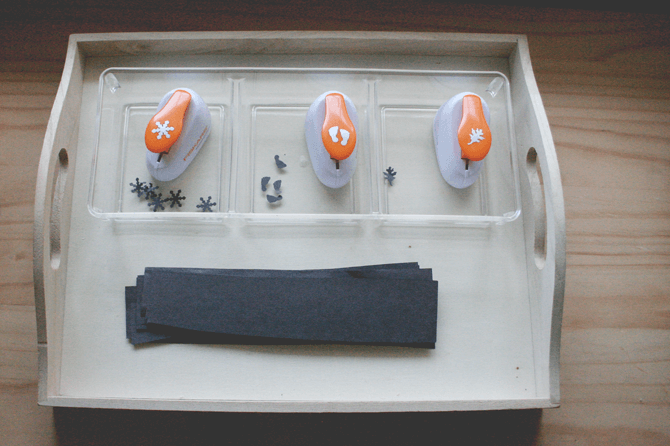
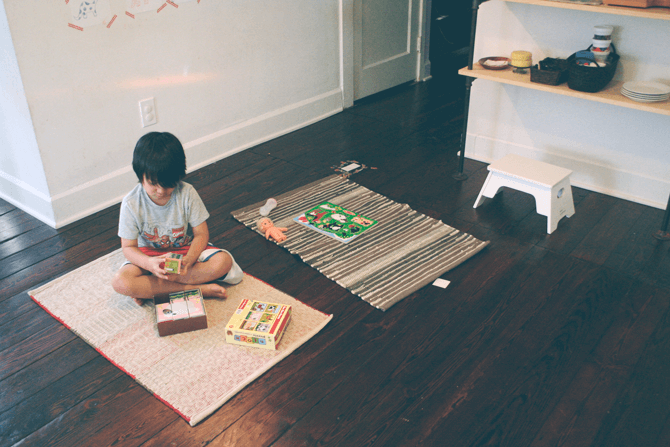

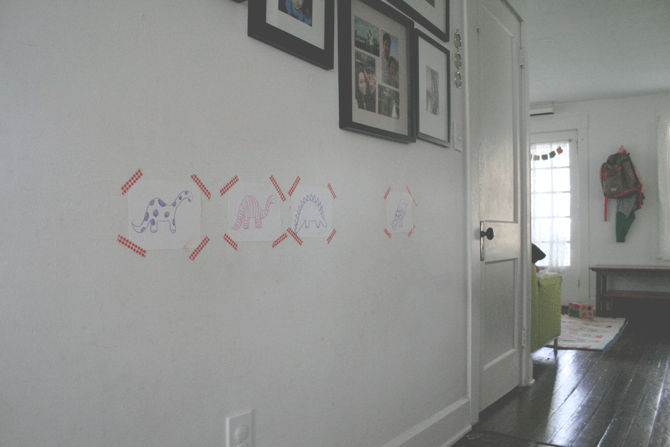
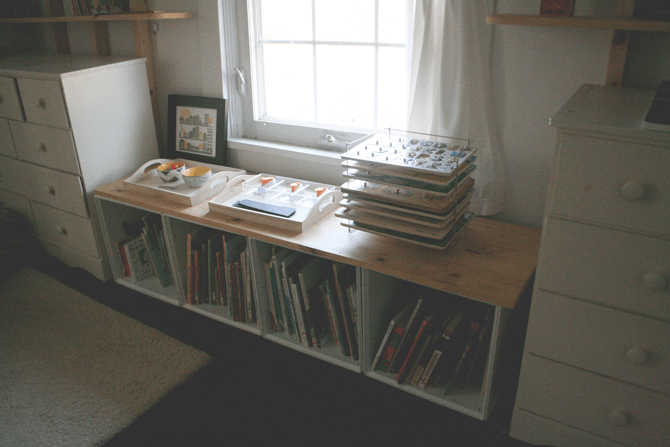
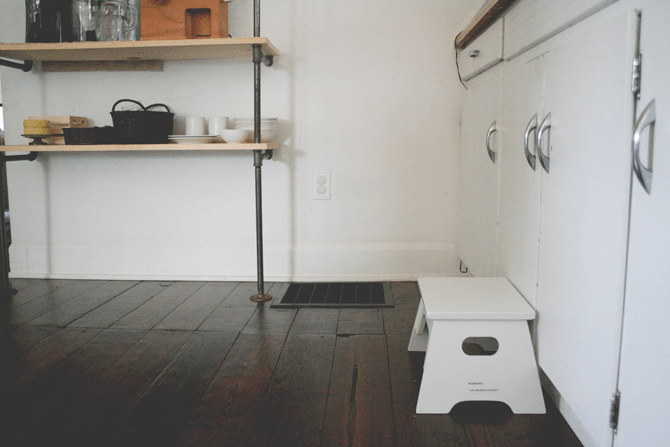
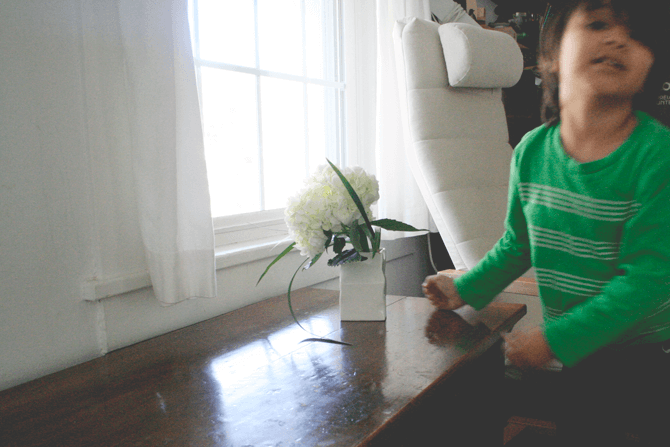
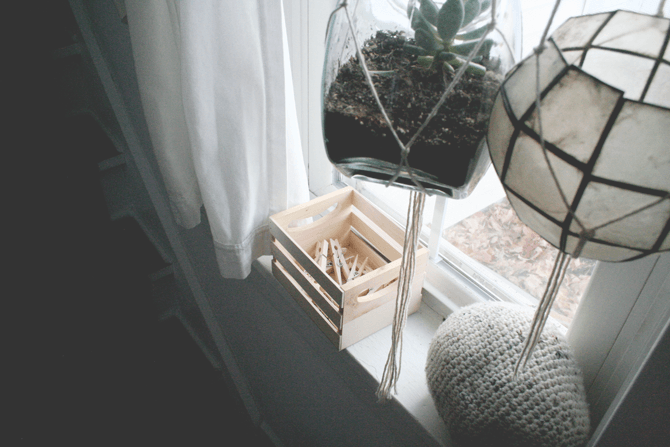
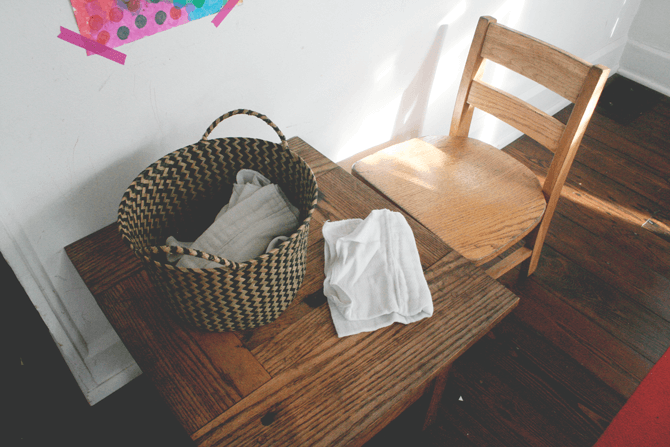
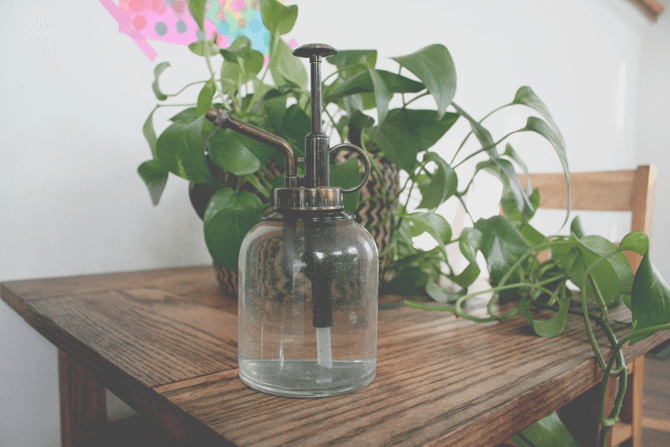
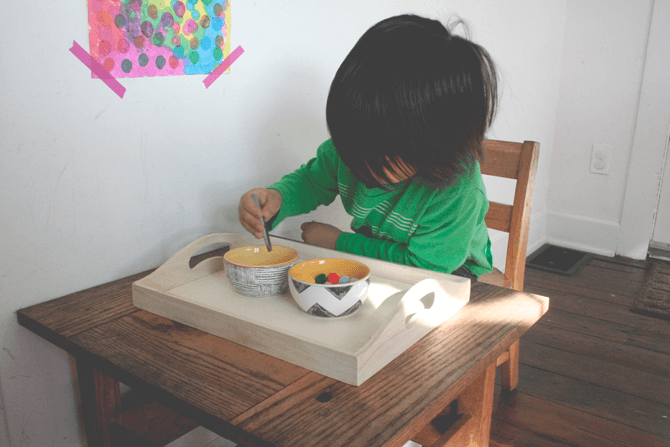
Comments 2
We have clear plastic (I know I know) 3-drawer cabinets, one for each kid, as their dressers. I also printed out labels from Pintrest and taped them on the front. The clear drawers help them see inside and the plastic is light and the drawers easily slide in and out. Both my 4yo (with muscle weakness on his right side) and my 2yo can put away laundry by themselves and pick out their own clothes. I also got mini-laundry baskets (4yo’s has a handle so he can carry it) that I put their clean clothes in so they can put them away in the morning.
I love some of the ideas you gave and I will have to incorporate them!
Author
Hi Krysta!
Thanks for the comment 🙂 I love the idea of labels and have been contemplating adding labels with photos of each of the kids above a hook for their coat and on the rack for their shoes. At my son’s Montessori, they have slipper bins with their pictures on them. It helps a lot for the non-readers, like my 2-year old daughter.
So great that your kids put away their own clothes. My kids are great at taking them out, we just need to work on the putting away! Though they can both dress themselves, so I’m happy for that.